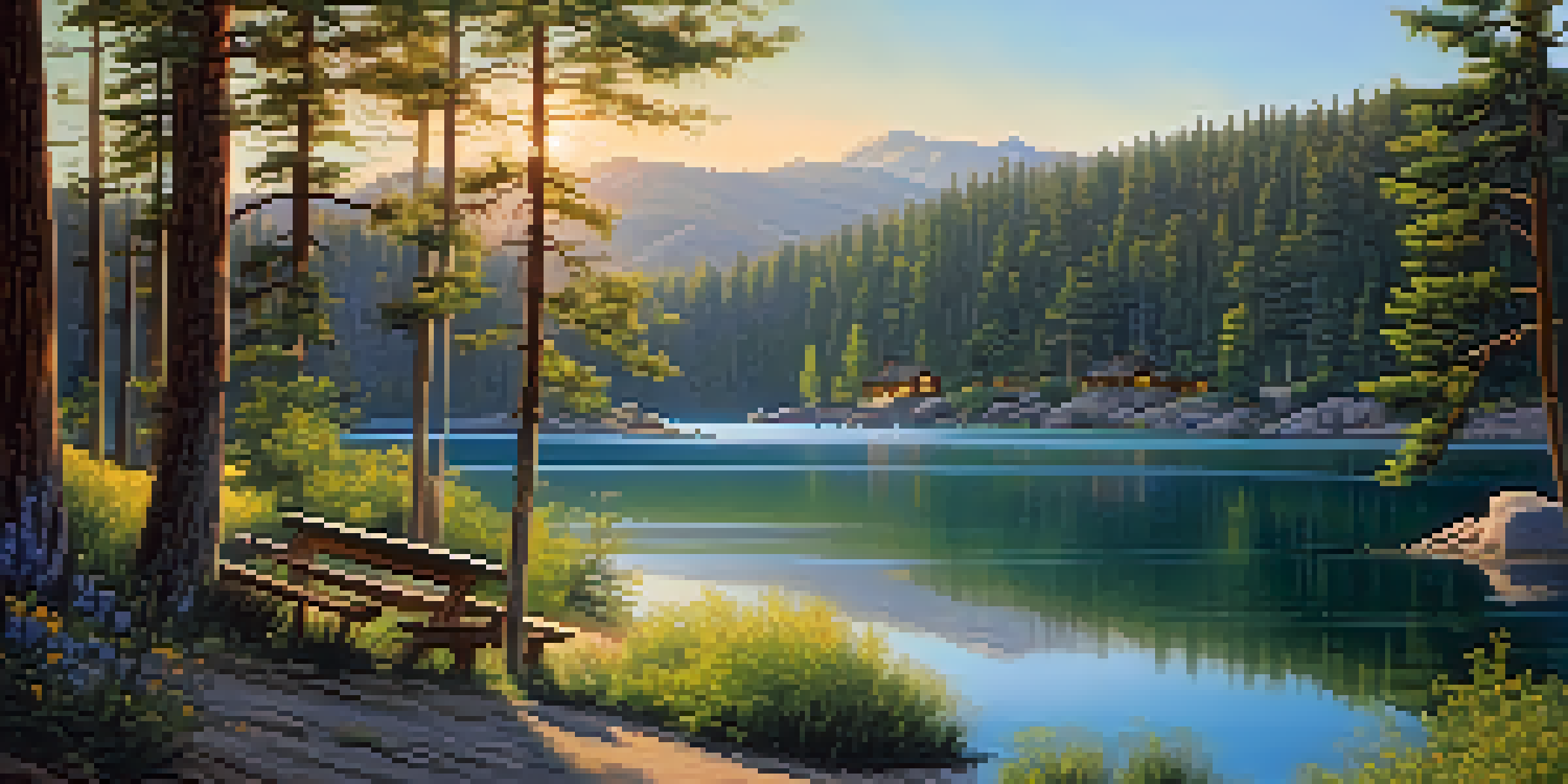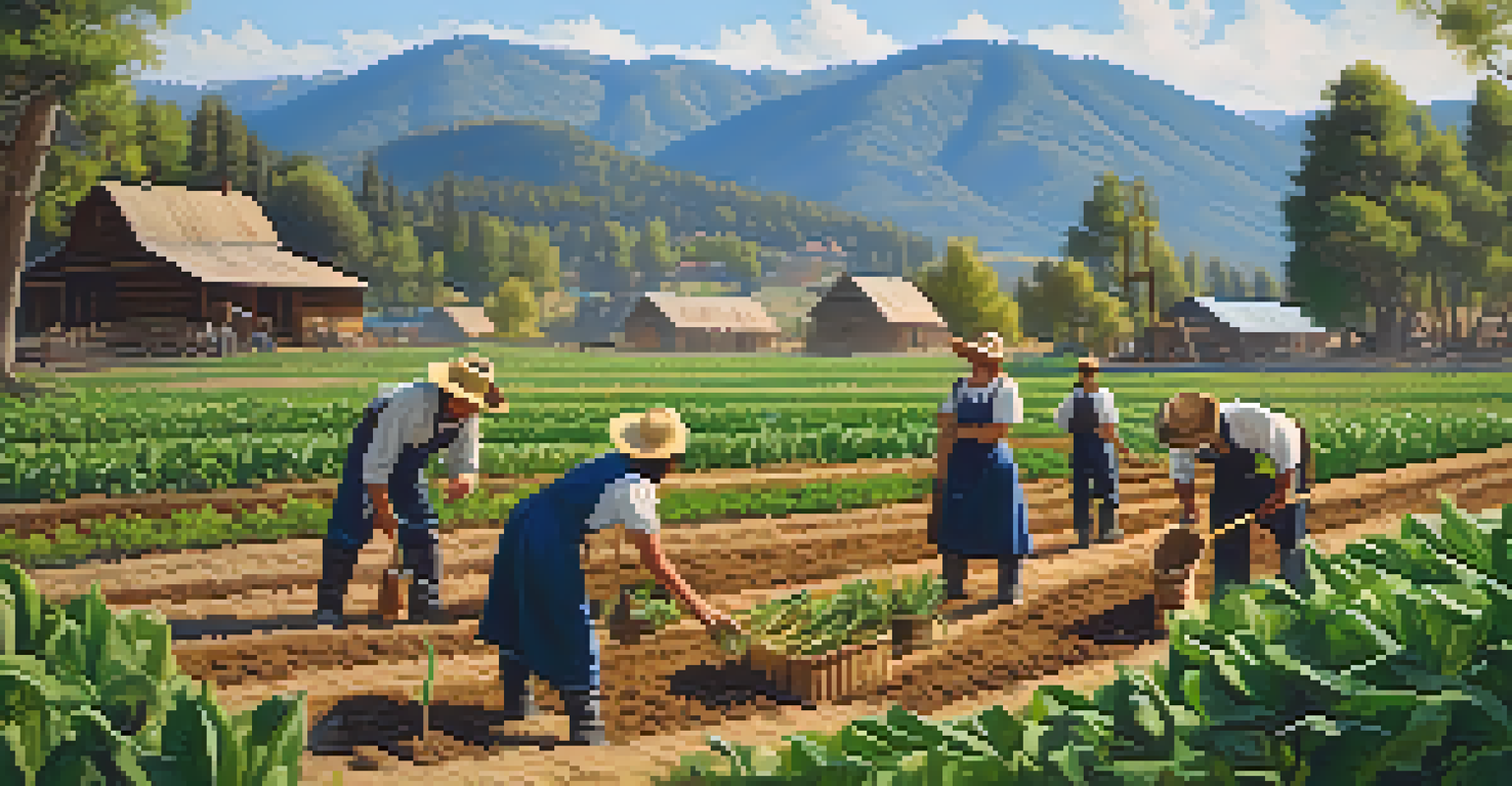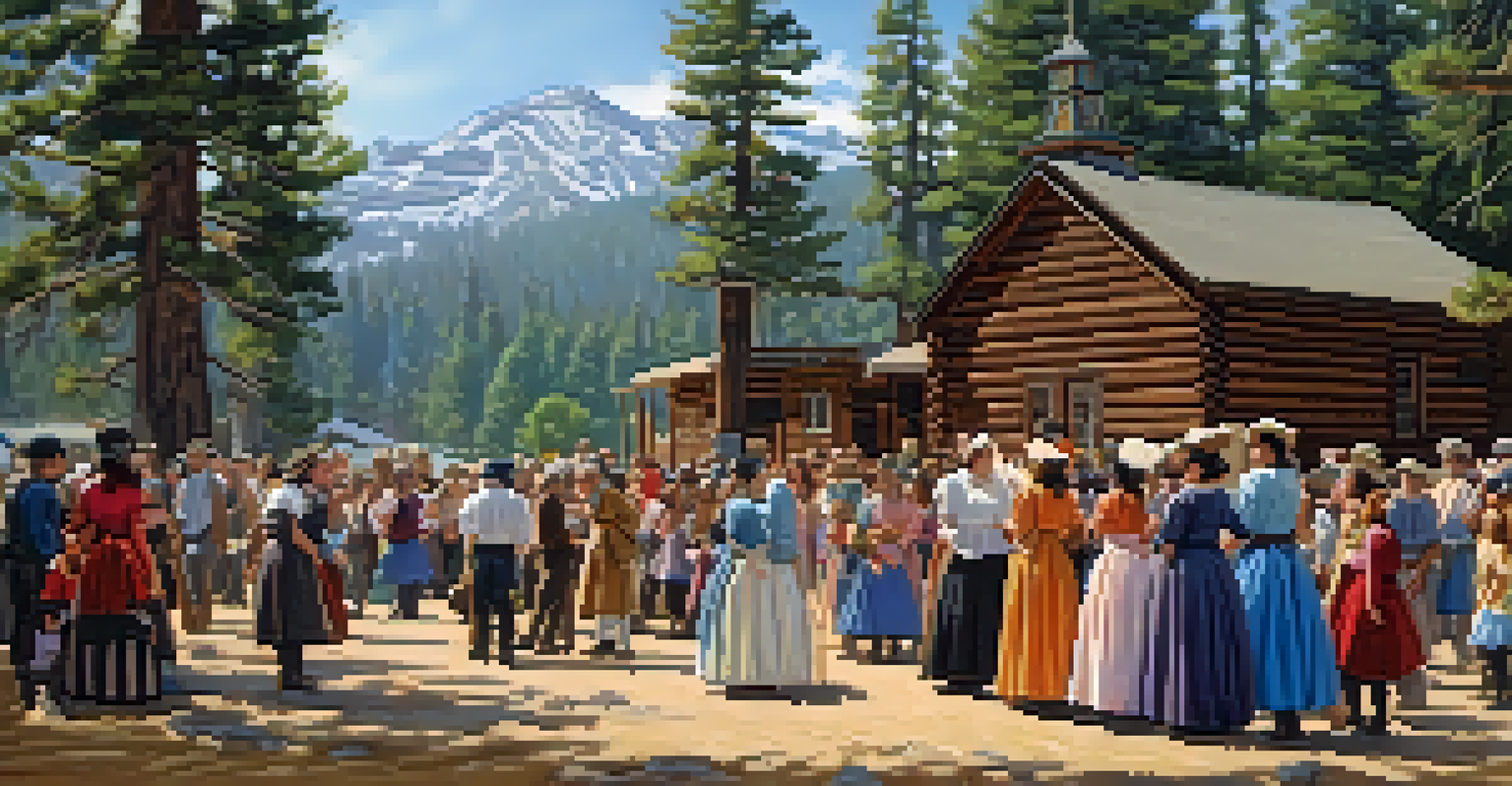A Journey Through Time: Big Bear's Early Settlers

The Natural Beauty That Attracted Early Settlers
Nestled in the San Bernardino Mountains, Big Bear Lake is a stunning natural haven that has captivated many since its early days. The lush forests, pristine waters, and breathtaking mountain views offered an irresistible allure to settlers seeking a new life. This picturesque setting provided not just beauty but also resources vital for survival, such as timber and fish, which were essential for building homes and sustaining families.
The wilderness holds answers to more questions than we have yet learned to ask.
Early settlers, drawn by the area's natural riches, often traveled long distances to establish their new homes. Many were adventurers, seeking opportunity and a fresh start in the untouched wilderness. The promise of a simpler life, away from the hustle and bustle of city living, led them to brave the rugged terrain and settle in this serene environment.
As the population grew, the need for community became evident. Settlers began to form small towns, contributing to the rich tapestry of Big Bear's history. Their determination and resilience in the face of challenges laid the foundation for the close-knit community that thrives today.
The Indigenous Peoples of Big Bear
Before the arrival of settlers, the Big Bear area was home to indigenous tribes, including the Serrano and Cahuilla. These tribes lived harmoniously with the land, utilizing its resources for food, shelter, and culture. Their deep connection to the environment is evident in their traditions and stories, many of which still resonate today.

The indigenous peoples were skilled in hunting, fishing, and gathering, adapting their lifestyles to the seasonal changes of the region. They created a sustainable way of life, demonstrating a profound respect for nature that early settlers would come to learn from. Their knowledge of the land was invaluable to the newcomers, who often relied on local expertise during their settlement.
Natural Beauty Attracted Settlers
The stunning landscapes and resources of Big Bear Lake drew early settlers seeking opportunity and a simpler life.
Tragically, the arrival of settlers brought significant changes to the indigenous way of life. However, their legacy remains an integral part of Big Bear’s history, influencing the community’s cultural landscape even today. Recognizing and honoring this heritage is essential for understanding the full story of Big Bear.
The Gold Rush and Its Impact on Big Bear
The California Gold Rush of the mid-1800s sparked a wave of migration, and Big Bear was not left untouched. As prospectors flooded into the region, many stumbled upon the lake and its surrounding beauty, choosing to settle rather than continue their search for gold. This influx of people brought new energy and opportunities but also challenges for the existing communities.
Nature is not a place to visit. It is home.
The promise of wealth led to the establishment of makeshift camps and trading posts. These early settlements began to develop into more permanent structures, as the need for supplies and services grew. The Gold Rush created a bustling atmosphere, with settlers hoping to strike it rich while also building their lives in this mountainous paradise.
While gold may not have been abundant in Big Bear itself, the Gold Rush era helped to shape the area’s economy and infrastructure. The increased population led to the development of essential services, including schools and stores, laying the groundwork for a thriving community. This period of growth was pivotal in cementing Big Bear’s place in California's history.
Life in the Early Settlements
Life for early settlers in Big Bear was both challenging and rewarding. They faced harsh winters, limited resources, and the need to build everything from the ground up. However, the spirit of camaraderie was strong among the settlers, who often relied on each other for support and survival.
Families worked together to cultivate the land and create homes, sharing tools and knowledge to improve their lives. Farming became a vital part of the community, with crops like potatoes, corn, and vegetables planted in the fertile soil. The success of these efforts fostered a sense of pride and accomplishment, uniting the settlers in their shared experience.
Indigenous Peoples' Lasting Influence
The rich heritage and sustainable practices of indigenous tribes shaped the early settlers' relationship with the land.
Social gatherings were also crucial for maintaining morale in the tough environment. Community events, such as barn raisings and potlucks, allowed settlers to bond and celebrate their achievements. These gatherings not only strengthened relationships but also helped to create a sense of belonging in the often-isolated wilderness.
The Role of Agriculture and Logging
Agriculture and logging became the lifeblood of Big Bear's early economy. The fertile valley around the lake provided ample opportunities for farming, while the surrounding forests offered timber for building homes and businesses. These industries not only sustained the settlers but also attracted more people to the area, eager to partake in the bountiful resources.
Settlers quickly learned to adapt their farming techniques to the mountainous terrain, growing crops that thrived in the cooler climate. They experimented with various fruits and vegetables, establishing a strong agricultural tradition that persists today. The success of these farms laid the groundwork for future generations, highlighting the importance of agriculture in Big Bear’s development.
Logging, on the other hand, played a crucial role in providing materials for construction and fuel. The abundant pine trees in the region became a valuable resource, leading to the establishment of sawmills and related businesses. This industry not only contributed to the local economy but also shaped the landscape of Big Bear, as trees were harvested to meet the growing demand.
Building Community and Infrastructure
As Big Bear's population grew, so did the need for community infrastructure. Early settlers recognized the importance of creating a supportive environment that could sustain their families and future generations. This led to the establishment of schools, churches, and stores that became the heart of the community.
Schools were particularly significant, as families wanted their children to receive an education despite the challenges of rural life. The early settlers banded together to create makeshift classrooms, often in homes or community centers. Their determination to provide education reflected the value they placed on knowledge and opportunity for their children.
Agriculture and Logging Fueled Growth
Agriculture and logging became vital industries that not only supported early settlers but also attracted new residents to Big Bear.
Churches also played a vital role in fostering a sense of belonging, offering not just spiritual guidance but also a space for social interaction. These establishments became gathering points for families, helping to cultivate relationships and strengthen the community's bonds. The foundations laid during these formative years continue to influence Big Bear's culture today.
Preserving Big Bear's Legacy Today
Today, the legacy of Big Bear's early settlers is celebrated and preserved through various initiatives and historical sites. Museums and local organizations work tirelessly to keep the stories and experiences of these pioneers alive. By sharing their history, they ensure that future generations understand the struggles and triumphs that shaped this beautiful area.
Community events, such as historical reenactments and heritage festivals, allow residents and visitors to immerse themselves in Big Bear's past. These events not only honor the settlers but also promote a sense of pride in the community’s rich history. It's a way for everyone to connect with the land and its stories, fostering a deeper appreciation for the area’s heritage.

Moreover, preserving the natural beauty of Big Bear is crucial for maintaining its historical significance. Conservation efforts aim to protect the landscapes that early settlers cherished, ensuring that the area's charm remains intact. By valuing both the history and the environment, Big Bear continues to thrive as a place where the past and present coexist harmoniously.